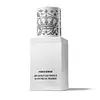What's inside
What's inside
 Key Ingredients
Key Ingredients

 Benefits
Benefits

 Concerns
Concerns

 Ingredients Side-by-side
Ingredients Side-by-side

Water
Skin ConditioningGlycerin
HumectantNiacinamide
SmoothingPropanediol
SolventButylene Glycol
HumectantPentylene Glycol
Skin ConditioningDimethicone
EmollientButyrospermum Parkii Butter
Skin ConditioningPentaerythrityl Tetraisostearate
EmollientTriheptanoin
Skin ConditioningPentaerythrityl Distearate
EmulsifyingC13-15 Alkane
SolventCaffeine
Skin ConditioningMyristyl Lactate
EmollientAscorbyl Tetraisopalmitate
AntioxidantPhenoxyethanol
PreservativeCI 77891
Cosmetic ColorantMica
Cosmetic ColorantHydroxyethyl Acrylate/Sodium Acryloyldimethyl Taurate Copolymer
Emulsion StabilisingCetearyl Alcohol
EmollientGlyceryl Behenate
EmollientSynthetic Fluorphlogopite
Sodium Stearoyl Glutamate
CleansingCarbomer
Emulsion StabilisingCaramel
Cosmetic ColorantTrisodium Ethylenediamine Disuccinate
Acrylates/C10-30 Alkyl Acrylate Crosspolymer
Emulsion StabilisingCI 77491
Cosmetic ColorantTocopherol
AntioxidantSodium Hydroxide
BufferingPolysorbate 60
EmulsifyingSorbitan Isostearate
EmulsifyingCitrus Aurantium Amara Flower Extract
RefreshingIsostearic Acid
CleansingSodium Stearate
CleansingPentaerythritol
HumectantHelianthus Annuus Seed Oil
EmollientCeteareth-20
CleansingCalcium Chloride
AstringentWater, Glycerin, Niacinamide, Propanediol, Butylene Glycol, Pentylene Glycol, Dimethicone, Butyrospermum Parkii Butter, Pentaerythrityl Tetraisostearate, Triheptanoin, Pentaerythrityl Distearate, C13-15 Alkane, Caffeine, Myristyl Lactate, Ascorbyl Tetraisopalmitate, Phenoxyethanol, CI 77891, Mica, Hydroxyethyl Acrylate/Sodium Acryloyldimethyl Taurate Copolymer, Cetearyl Alcohol, Glyceryl Behenate, Synthetic Fluorphlogopite, Sodium Stearoyl Glutamate, Carbomer, Caramel, Trisodium Ethylenediamine Disuccinate, Acrylates/C10-30 Alkyl Acrylate Crosspolymer, CI 77491, Tocopherol, Sodium Hydroxide, Polysorbate 60, Sorbitan Isostearate, Citrus Aurantium Amara Flower Extract, Isostearic Acid, Sodium Stearate, Pentaerythritol, Helianthus Annuus Seed Oil, Ceteareth-20, Calcium Chloride
Water
Skin ConditioningPolyacrylate Crosspolymer-6
Emulsion StabilisingGleditsia Triacanthos Seed Extract
Glycerin
HumectantHesperidin Methyl Chalcone
AntioxidantSteareth-20
CleansingDipeptide-2
Skin ConditioningPalmitoyl Tetrapeptide-7
Skin ConditioningHydrolyzed Elastin
EmollientPalmitoyl Hexapeptide-19
Skin ConditioningPhenoxyethanol
PreservativeZeolite
AbsorbentPvp
Emulsion StabilisingSodium Hydroxide
BufferingCI 77891
Cosmetic ColorantSea Water
HumectantZingiber Officinale Root Extract
MaskingPropylene Glycol
HumectantBenzyl Alcohol
PerfumingSodium Benzoate
MaskingPotassium Sorbate
PreservativeTocopheryl Acetate
AntioxidantSodium Hyaluronate
HumectantWater, Polyacrylate Crosspolymer-6, Gleditsia Triacanthos Seed Extract, Glycerin, Hesperidin Methyl Chalcone, Steareth-20, Dipeptide-2, Palmitoyl Tetrapeptide-7, Hydrolyzed Elastin, Palmitoyl Hexapeptide-19, Phenoxyethanol, Zeolite, Pvp, Sodium Hydroxide, CI 77891, Sea Water, Zingiber Officinale Root Extract, Propylene Glycol, Benzyl Alcohol, Sodium Benzoate, Potassium Sorbate, Tocopheryl Acetate, Sodium Hyaluronate
Ingredients Explained
These ingredients are found in both products.
Ingredients higher up in an ingredient list are typically present in a larger amount.
Ci 77891 is a white pigment from Titanium dioxide. It is naturally found in minerals such as rutile and ilmenite.
It's main function is to add a white color to cosmetics. It can also be mixed with other colors to create different shades.
Ci 77891 is commonly found in sunscreens due to its ability to block UV rays.
Learn more about CI 77891Glycerin is already naturally found in your skin. It helps moisturize and protect your skin.
A study from 2016 found glycerin to be more effective as a humectant than AHAs and hyaluronic acid.
As a humectant, it helps the skin stay hydrated by pulling moisture to your skin. The low molecular weight of glycerin allows it to pull moisture into the deeper layers of your skin.
Hydrated skin improves your skin barrier; Your skin barrier helps protect against irritants and bacteria.
Glycerin has also been found to have antimicrobial and antiviral properties. Due to these properties, glycerin is often used in wound and burn treatments.
In cosmetics, glycerin is usually derived from plants such as soybean or palm. However, it can also be sourced from animals, such as tallow or animal fat.
This ingredient is organic, colorless, odorless, and non-toxic.
Glycerin is the name for this ingredient in American English. British English uses Glycerol/Glycerine.
Learn more about GlycerinPhenoxyethanol is a preservative that has germicide, antimicrobial, and aromatic properties. Studies show that phenoxyethanol can prevent microbial growth. By itself, it has a scent that is similar to that of a rose.
It's often used in formulations along with Caprylyl Glycol to preserve the shelf life of products.
Sodium Hydroxide is also known as lye or caustic soda. It is used to adjust the pH of products; many ingredients require a specific pH to be effective.
In small amounts, sodium hydroxide is considered safe to use. However, large amounts may cause chemical burns due to its high alkaline.
Your skin has a natural pH and acid mantle. This acid mantle helps prevent harmful bacteria from breaking through. The acid mantle also helps keep your skin hydrated.
"Alkaline" refers to a high pH level. A low pH level would be considered acidic.
Learn more about Sodium HydroxideWater. It's the most common cosmetic ingredient of all. You'll usually see it at the top of ingredient lists, meaning that it makes up the largest part of the product.
So why is it so popular? Water most often acts as a solvent - this means that it helps dissolve other ingredients into the formulation.
You'll also recognize water as that liquid we all need to stay alive. If you see this, drink a glass of water. Stay hydrated!
Learn more about Water